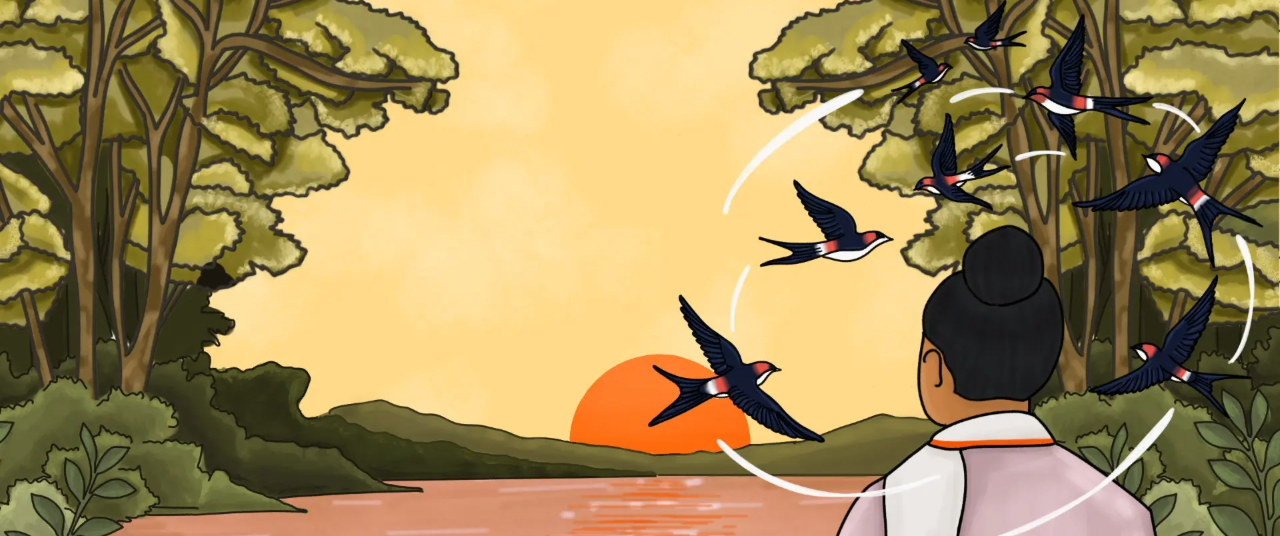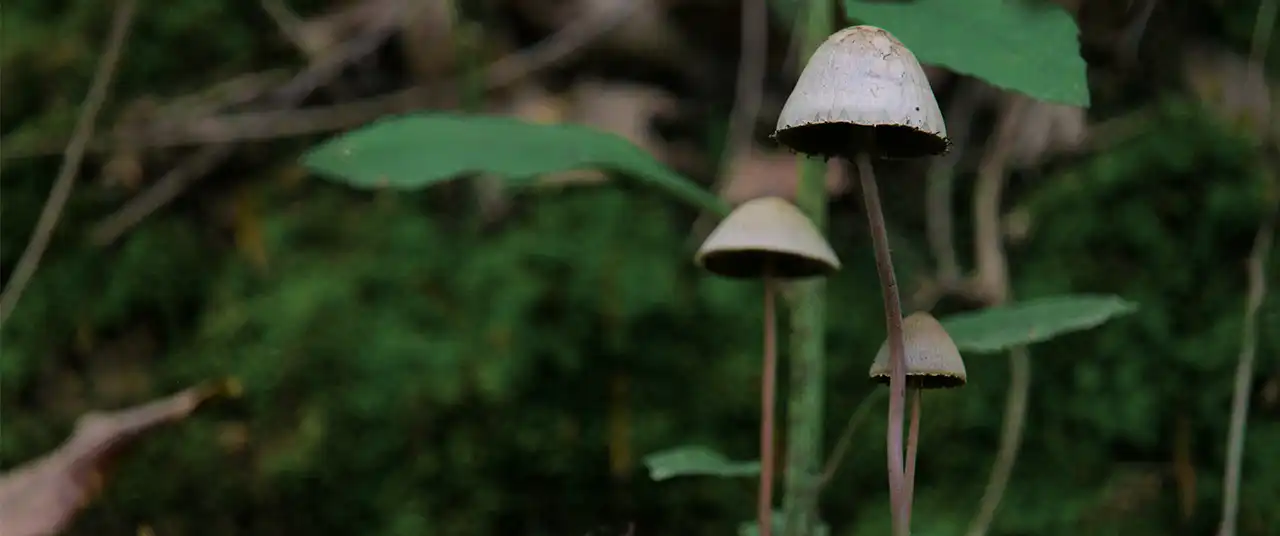Hidden in plain sight, greens like taikilo and alu have defined local diets and history






It was a heritage awareness walk held in the semi-forested area of Pernem in North Goa, in June. The monsoon season had just begun, making the scenery lush and green. While admiring this greenery, something caught the attention of Neeta Omprakash, an independent visual arts researcher and lover of wild greens. She immediately reached for a small kitchen knife and a bag, and foraged for the young, tender leaves of ‘luti’ or dragon stalk yam (Amorphophallus commutatus)—the plant that had made her pause.
Some of her fellow walkers were amazed by this sight, but for Omprakash, foraging is an annual tradition when monsoon clouds arrive in Goa. “I eagerly wait for the first week of rain, as it is the time when the first shoots of luti break through the tough crust of earth to emerge,” says Omprakash, a Panaji resident who loves to cook this vegetable which she describes as “highly aromatic.”
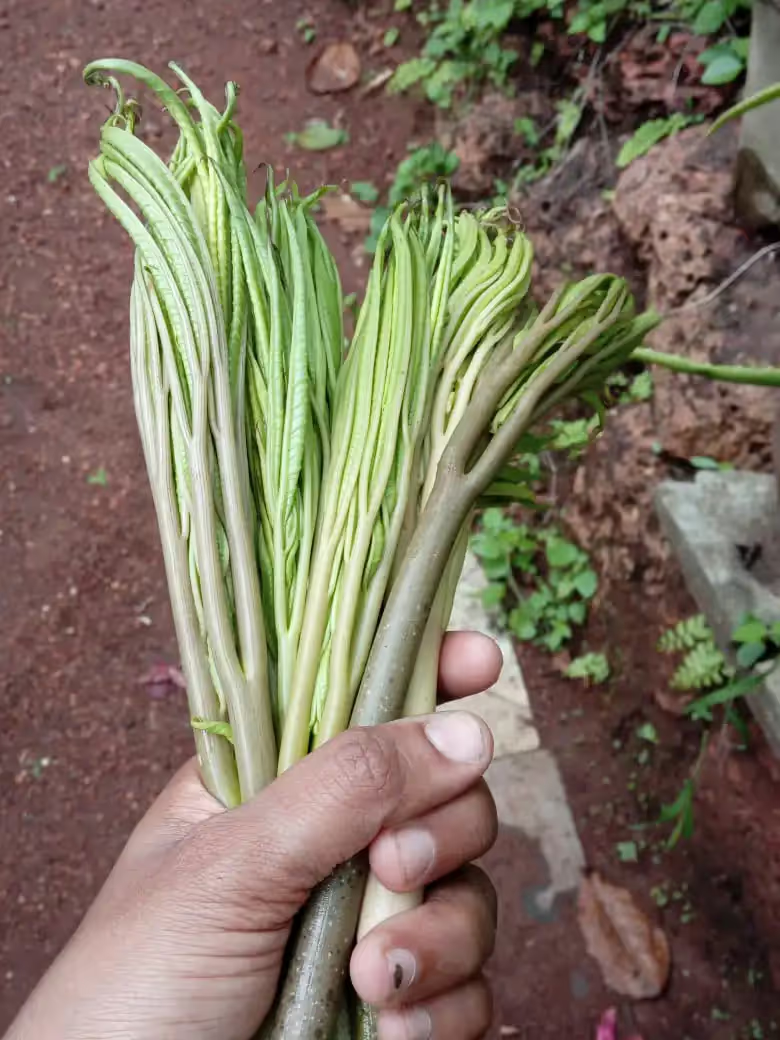
She prepares it by first soaking the leaves overnight, with a few peels of kokum, which helps prevent skin irritation (the presence of calcium oxalate crystals in luti are neutralised by souring agents like kokum). She then cooks it with coconut, jackfruit seeds, garam masala, ‘kuvalyachi vadi’ (a condiment made from ash gourd), and then tempers it with coconut oil and garlic. “Once garlic is tempered in coconut oil, the aroma takes over the entire home! I have never missed an opportunity to eat luti bhaji,” adds Omprakash, who has a love for foraging wild produce.
In Goa, ‘monsoon greens’ have their own fan base. The season for these vegetables and leafy greens begins in June and lasts until August, as they are best consumed while they are still tender. Local beliefs state that one must eat these greens at least once during the rainy season.

A variety of greens can be found in the state, each specific to its particular region, making some of them hyperlocal. The commonly found ones are the leaves of ‘tailkilo’ (Cassia tora), ‘kisra’ (moringa), ‘kuddukechi bhaji’ (Celosia argentea or cock’s comb), and tender shoots of ‘akur’ or mangrove fern (Acrostichum aureum). Alongside these, wild fruits such as ‘fagla’ or spiny gourd are also consumed. The leaves and shoots of the Colocasia (arbi) remain a widely consumed favourite, as they grow wild along roadsides, farms, and open spaces. There are around six edible varieties of Colocasia that are eaten in Goa, including ‘tero’, ‘alu’, ‘tirpatche alu’, and ‘vatalu’, which have medicinal properties and grow on tree trunks in deep forests.
For many Goans, cooking these vegetables is a means to feel connected to their land and its resources. It is also an attempt to document culinary traditions and conduct further research into them.
“I usually forage Colocasia from my backyard, and other monsoon greens from forests. I hardly buy any edible greens during the monsoon,” says photographer and local cuisine enthusiast, Assavri Kulkarni. She cooks Colocasia leaves with souring agents like ‘aambade’ or hog plums. These vegetables have alkaline properties that can irritate the throat when eaten; souring agents can help to combat this irritation. The other commonly used souring agent is kokum peels. Along with these souring agents, jackfruit seeds are used to add an element of flavour and texture. Additionally, Kulkarni sometimes adds peas or dried shrimp for their protein content.
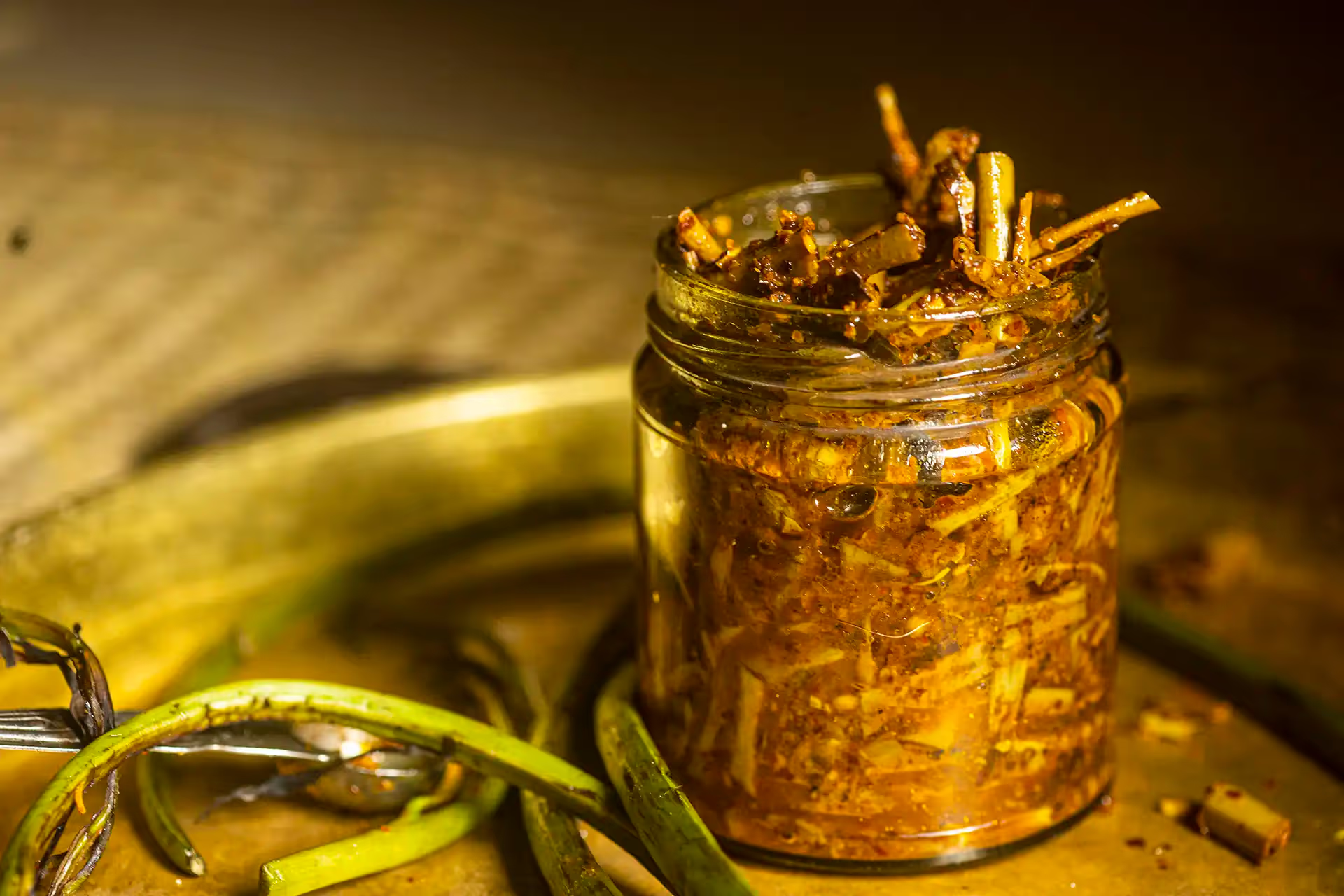
“I also make ‘alu vadi’ for my daughter’s tiffin,” says Kulkarni. She loves to experiment with wild greens, preparing dhoklas and sweet pancakes with taikilo leaves. She also loves to cook akur during this season, either by frying it or adding it to pulaos or curries like ‘alsanyache tonak (a curry made from local beans called ‘alsane’). She even pickles them—a recipe she confirms is born out of trial and error.
For many Goans, cooking these vegetables is a means to feel connected to their land and its resources. It is also an attempt to document culinary traditions and conduct further research into them.
Also read: Foraging in Bengaluru: A source of sustenance, flavour
What’s in a name?
School teacher and folk art researcher Shubhada Chari enjoys discussing rare greens, in an effort to share this knowledge with others. In the course of her documentation efforts, she has encountered insightful anecdotes, such as how the names of some villages are possibly derived from these foraged greens. She mentions a creeper called ‘ghotvel’ (Smilax ovalifolia), whose maroon-hued leaves are a seasonal delicacy. “There’s a village called Ghoteli in the Sattari taluka, and locals say that its name comes from this creeper as it is commonly found here,” says Chari.
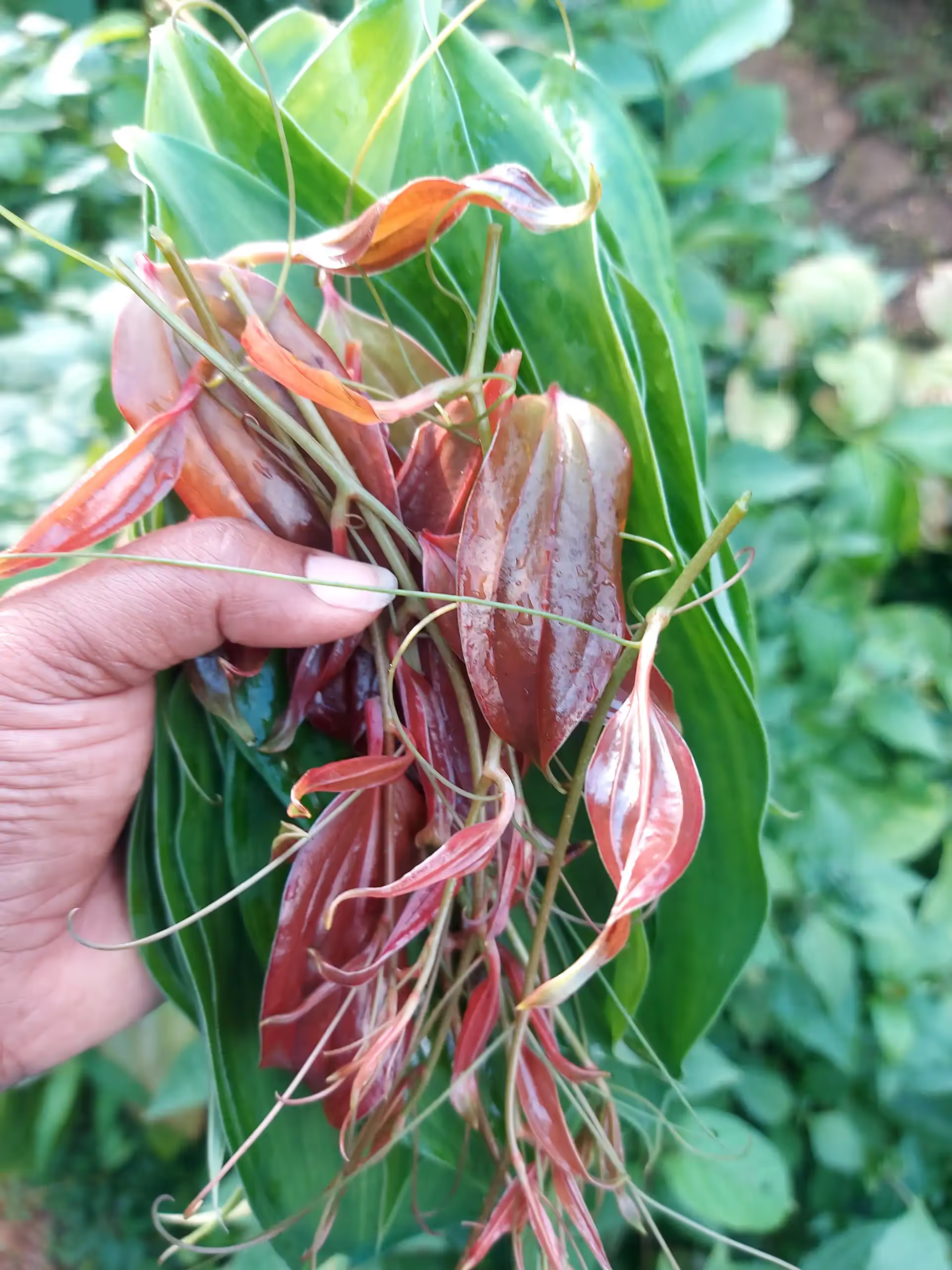
The fate of a village named Pendral and a fruit called ‘pendro’ is believed to be similar. “Intriguingly, this fruit can easily replace potatoes in dishes,” adds Chari. Pendro is harvested in the monsoon and prepared by boiling and peeling off its outer skin which is not safe for consumption. Its core—with a texture resembling a potato’s—is edible. The forest dwellers of Sattari have long included this fruit in their diets.
Chari adds that the leaves of ‘bonkalo’ (Cheilocostus speciosus), commonly known as crêpe ginger, also find a place in her kitchen. These leaves possess a slight sourness and are often cooked with tur or moong dal.
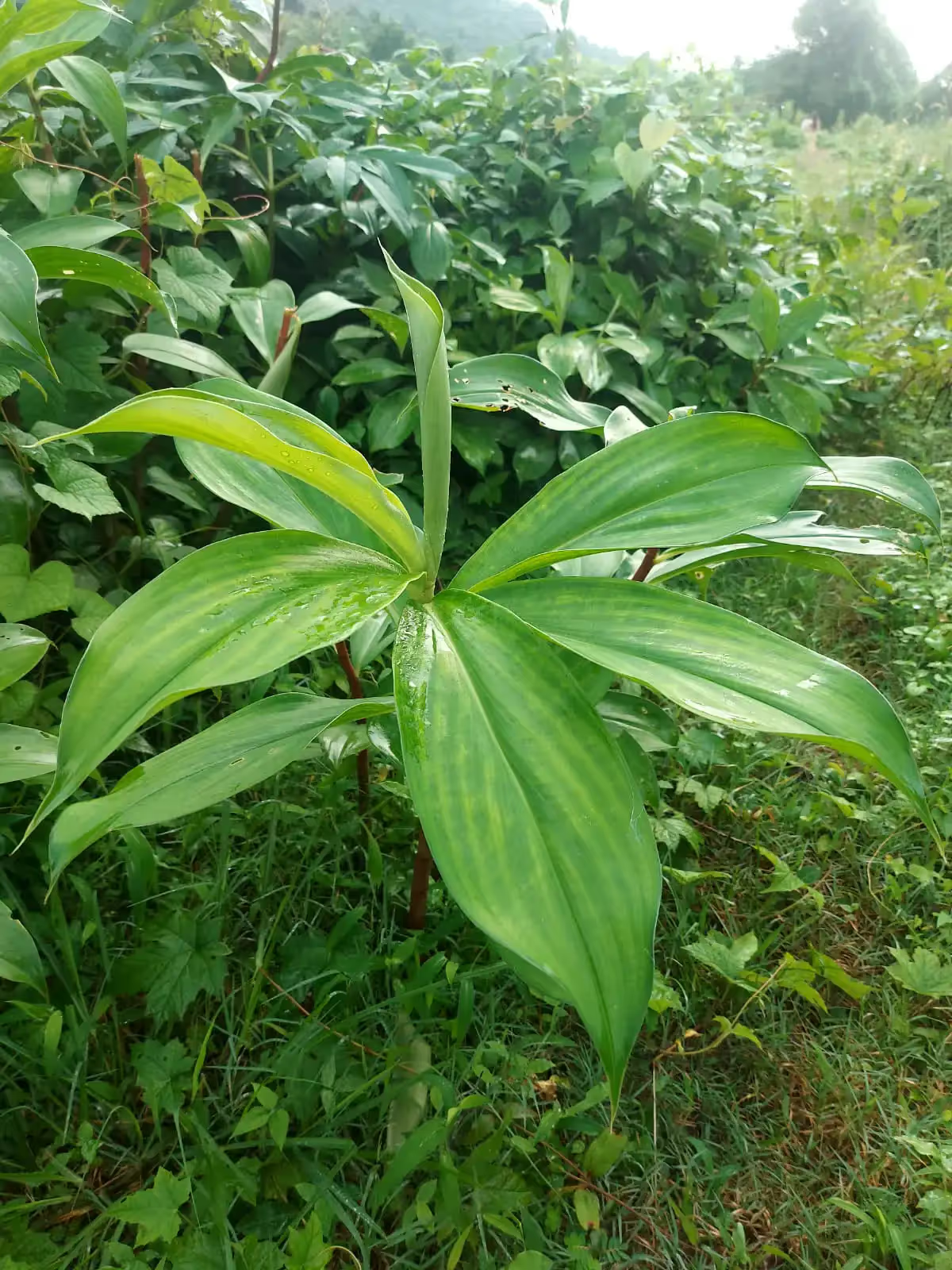
Recognition of indigenous practices and knowledge
Bamboo shoots—cut and added to curries, brined in salt water, or shallow fried—are also traditionally consumed in Goan villages. Chari informs that locals usually use two bamboo species for this—‘kankiche bamboo’ (Dendrocalamus strictus) and ‘chivar’ (Oxytenanthera ritcheyi). They also cook pods of the ‘kuda’ (Holarrhena pubescens) tree as a vegetable at this time of the year.
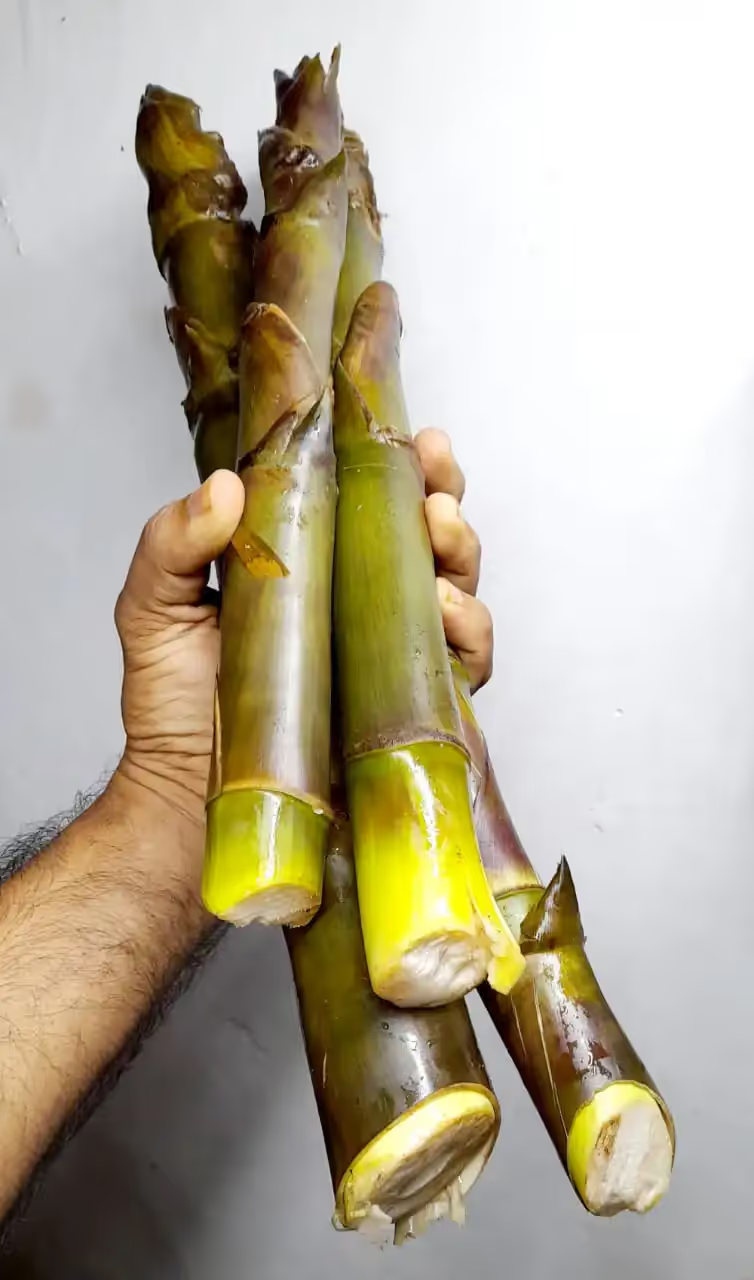
Journeys into the forested areas of Sanguem, Quepem, and Canacona reveal a variety of hyper-local greens. Residents here, typically tribals of the Velip community, have been foraging these greens for generations, guided by indigenous knowledge passed down through generations. They have relied on these food sources during torrential, stormy monsoons. The establishment of the ‘Ran-Bhaji Utsav’ gives locals a chance to showcase the biodiversity of their lands; an annual wild greens festival held at Canacona, it is organised by the Adarsh Yuva Sangh cultural group in collaboration with the Goa State Biodiversity Board and the Agriculture Department. It is an opportunity to display vegetables that city dwellers have neither heard of, nor seen.
The festival’s third edition, held on 19 July 2025, brought forth at least 40 types of forest and wild leafy vegetables like ‘teniya bhaji’, ‘ek pana bhaji’, ‘harfule bhaji’, ‘merevaili/gundure bhaji’, ‘kodvo bhaji’, ‘chaie bhaji’ (a vegetable preparation of tubers), ‘chudtechi bhaji’, ‘kayriyo’ (seeds of Entada Scandens, which are boiled and cooked), and shirmundli (a wild creeper found in the forest).
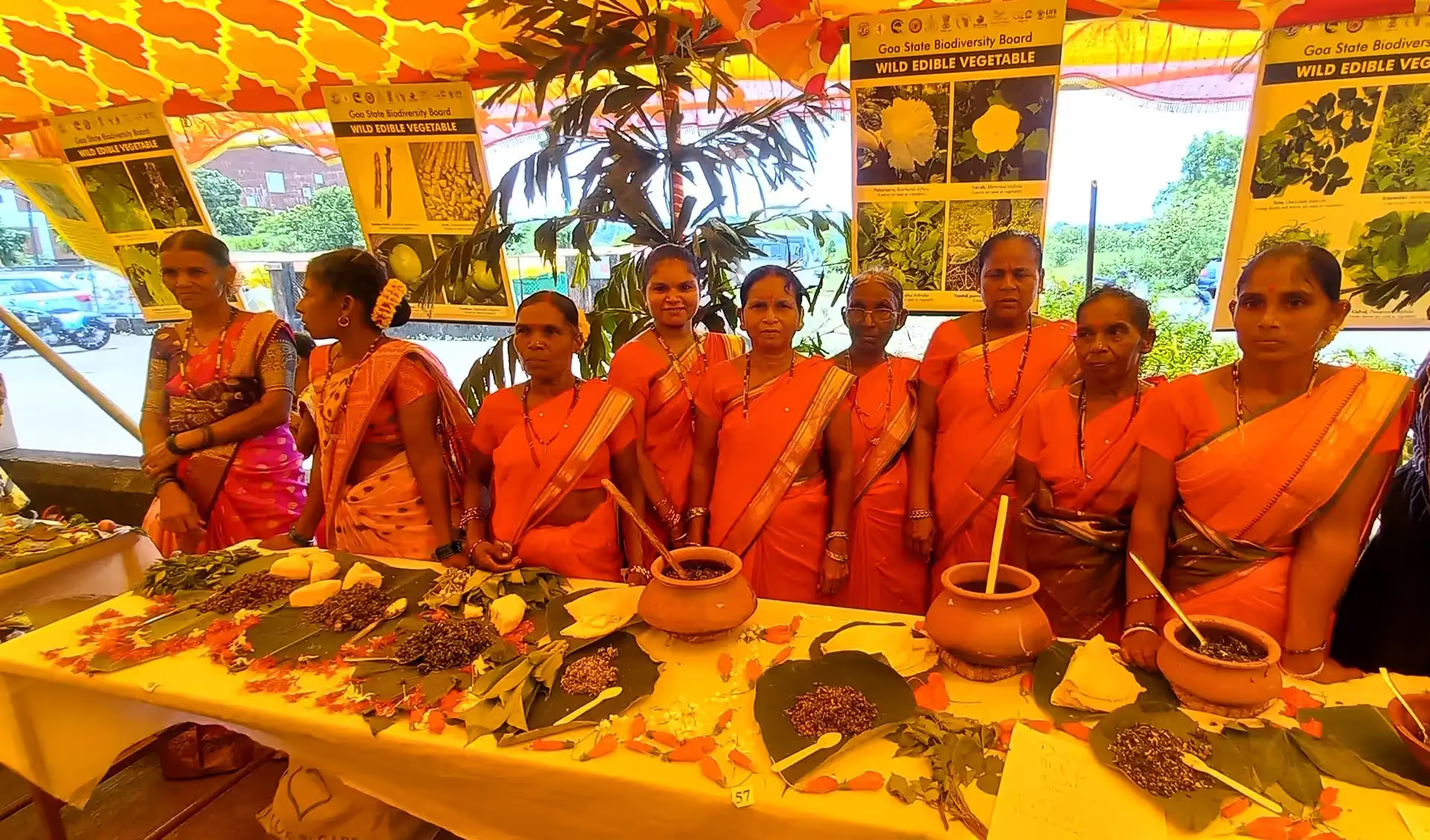
In some villages of Canacona, the tender stem of the wild banana plant, known as ‘ghabo’, is also consumed during the monsoon. Harvested during the budding of the banana flower, it is added to the local vegetarian delicacy ‘khatkhate’.
Along with leaves and stems, wildflowers of plants like ‘churchurechi fula’ (Pavetta indica) are also consumed.
Also read: Protecting place and power, not people: The trouble with GI tags
A looming ecological threat
While accounts of these wild greens may paint a thriving picture of Goa’s biodiversity, much of the state is constantly under threat due to concretisation and urbanisation. As per the 2011 Census, 62% of the state’s population was already urbanised. A population projection report released in 2020 predicts that by 2036, 88% of the state’s residents will live in towns and cities.
Chari, who frequents Goa’s forests, attests to the decrease in proportion of wild greens owing to habitat loss. “Nowadays, construction can be observed even in forested areas. In the summers, some villagers light forest fires to clear land for farming, which results in the burning of seeds that would otherwise have sprouted in the monsoon,” she states.
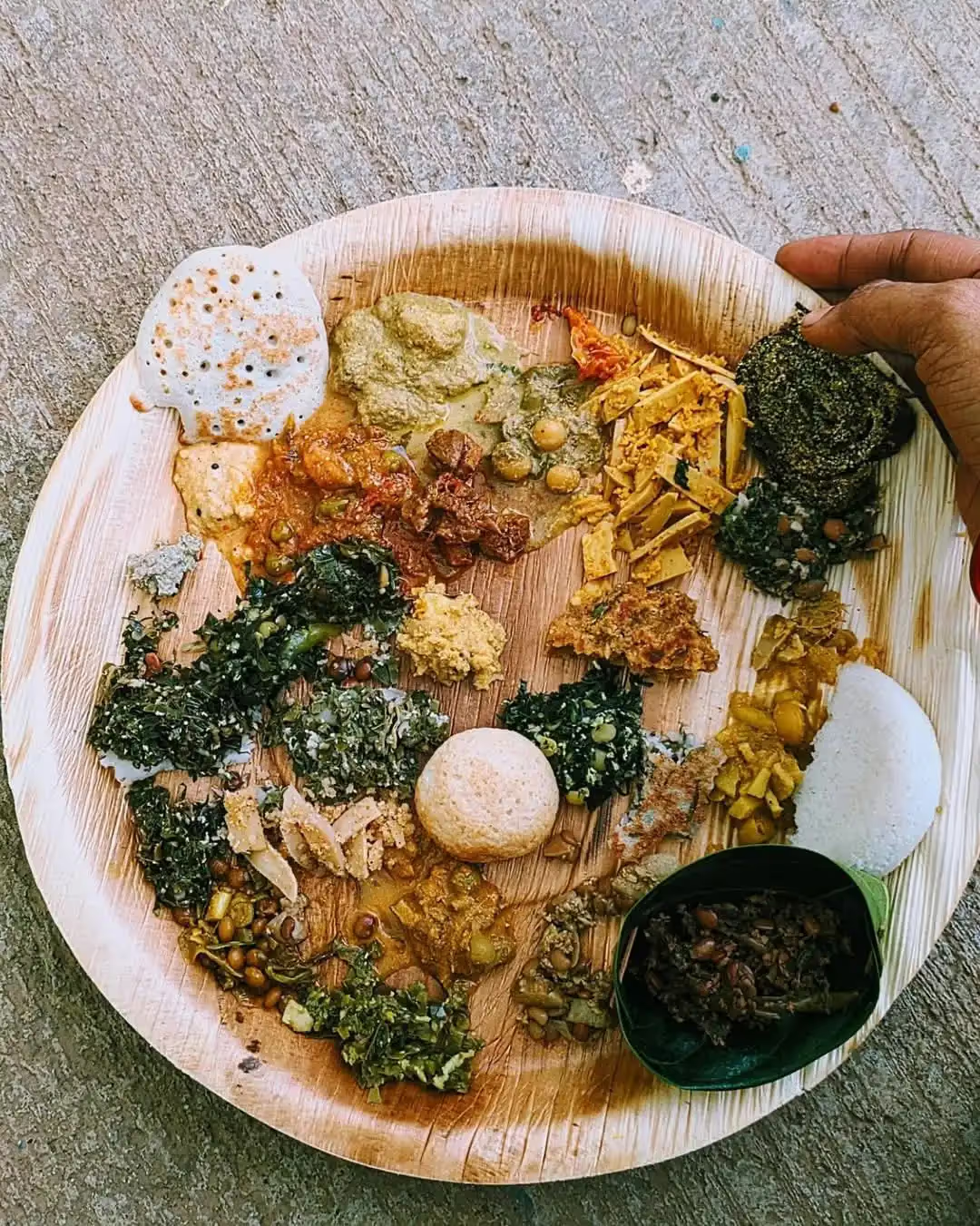
Moreover, awareness about monsoon greens is lacking in urban and semi-urban areas. Miguel Braganza, formerly an officer with the Agriculture Department of Goa and Secretary of Goa’s Botanical Society, states, “Common veggies like taikilo and kudduko, once commonly found even on roadsides, are becoming rare. [In recent times] panchayats and municipalities have used brush cutters to clear open spaces. The regeneration of these plants is not taking place.” Brush cutters are employed for aesthetic reasons and out of a belief that the proliferation of wild greens will attract snakes and other creatures.
To combat this lack of awareness, the Agriculture Department has begun promoting monsoon vegetables. “Monsoon greens are not just flavourful additions to our plates—they act as natural cleansers, boost immunity, and help the body adapt to seasonal changes,” says Geeta Velingker, Scientist (Home Science), Krishi Vigyan Kendra South Goa, Margao.
Others, like Kulkarni, believe that it is difficult to replicate the same taste and nutritional qualities when these vegetables are domesticated.
She adds that these vegetables are high in micronutrients such as fibre, iron, and calcium. “Embracing these local treasures not only keeps us healthy but also connects us back to the land, our culture, and sustainable living,” she says.
Also read: For Odisha’s Chuktia Bhunjias, preservation by drying is tradition—and sustenance
Solutions, in your own backyard
Additionally, many of these vegetables can be grown in one’s own backyard—a means to enjoy fresh produce. “Any wild plant can be domesticated and cultivated once it is understood,” says Braganza. He suggests growing species of Colocasia, yams, and even spiny gourds. “For example Rajat Rudresh Prabhu, a young entrepreneur and farmer from Ponda, is growing spiny gourds on a commercial scale,” he adds.
Others, like Kulkarni, believe that it is difficult to replicate the same taste and nutritional qualities when these vegetables are domesticated. “Vegetables and plants that grow in the wild taste better, probably because of the soil profile and water quality. This seasonal produce is a gift from nature, which we need to nurture and conserve for future generations. I believe that sustainability begins with our plates.”
{{quiz}}
(Additional editing by Neerja Deodhar)
Explore other topics
References

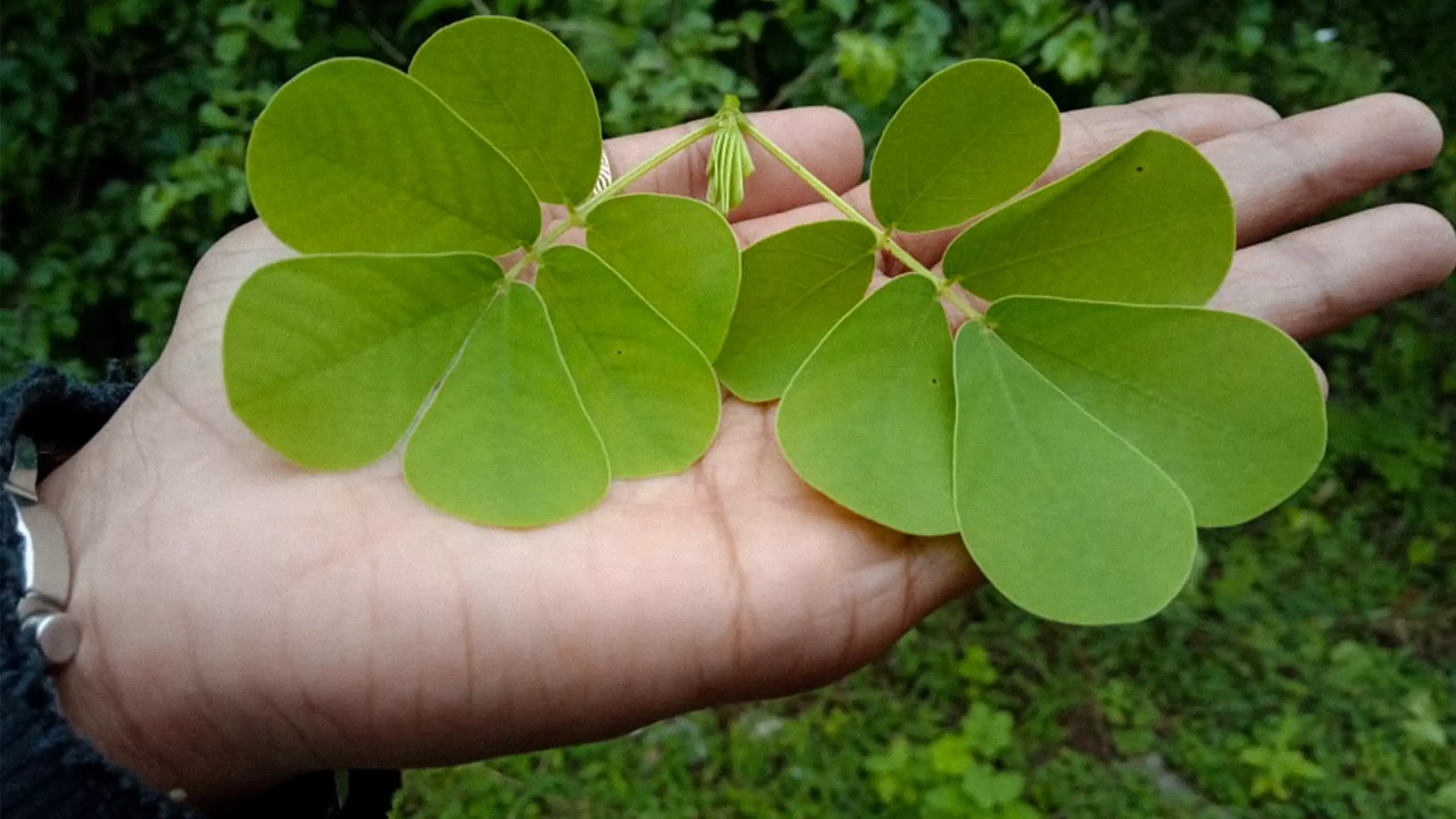
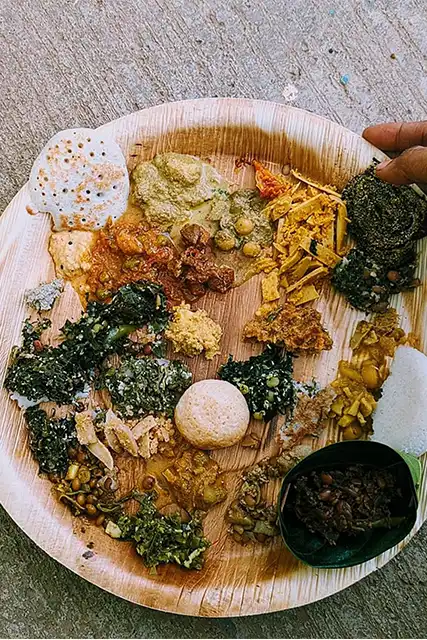

.jpg)

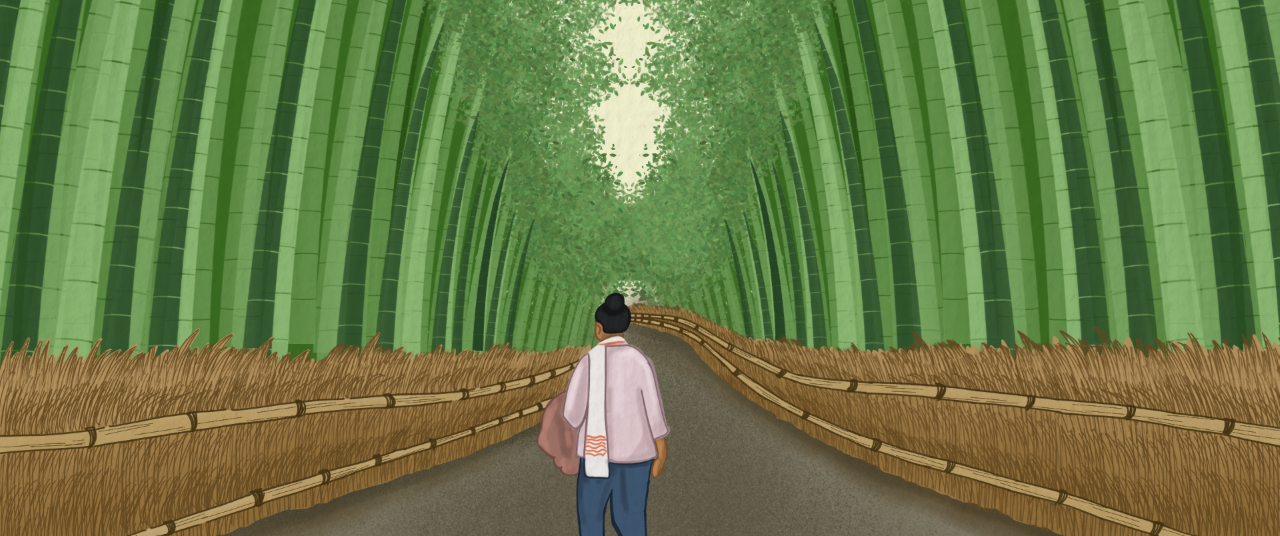
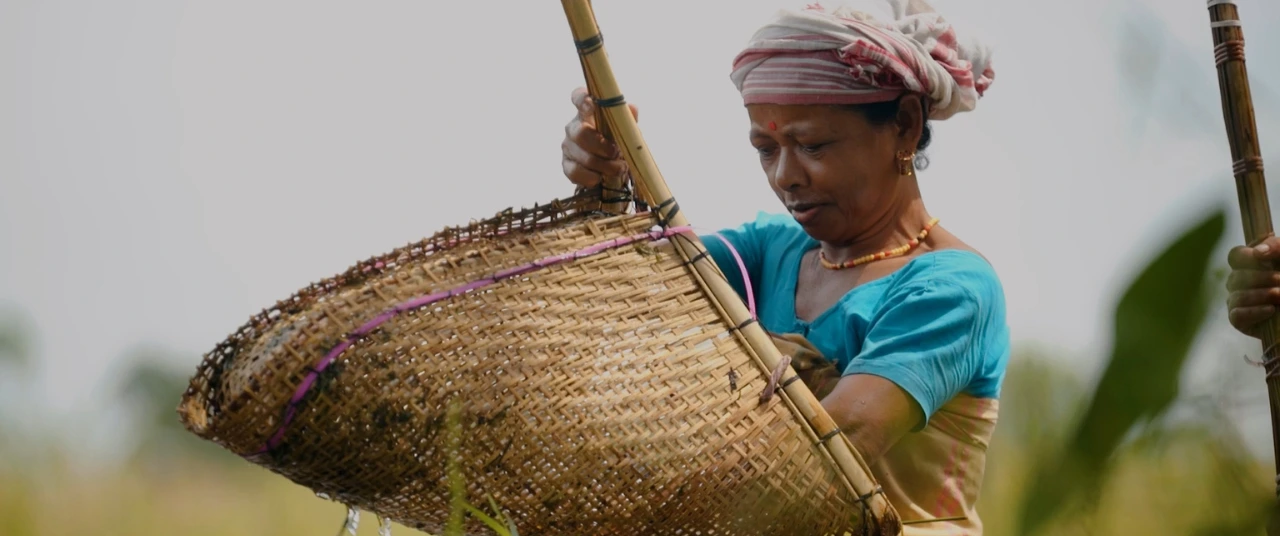
.png)
